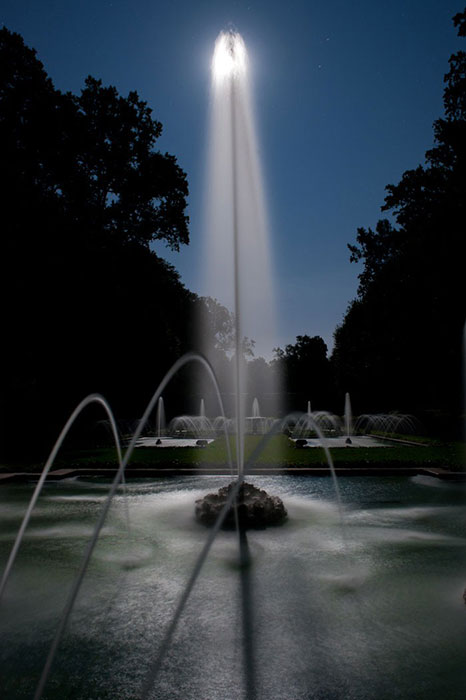Moonlight has its own soft, romantic poetry, but to get it right when photographing a garden at night requires some hard science. Six years ago, we learned this the hard way – we were photographing in a private garden, waiting and waiting for the moon to rise above the tree line, but it never did. Turns out that year the moon was on an exceptionally low orbit path. Who knew the moon’s orbit wobbles? So when we went to Longwood Gardens in Kennett Square, Pennsylvania, to photograph the Italian garden for a National Geographic feature, you can bet we made sure it wouldn’t happen again.
It was particularly important to do our homework ahead of time because the garden is surrounded by a tall allée of trees—the moon would illuminate this garden for only a two hour period – at most. Also, the fountains are on a timer – and normally off at night, so we arranged for them to be turned on for those two hours. We had to know exactly which two hours would work. Enter The Photographer’s Ephemeris, a software program developed by Stephen Trainor that tells you everything you need to know about where and when the moon will be at a given location on any date, as well as the percentage of illumination and the angle and degrees above the horizon. We’d never used it before, so we nervously punched in our coordinates and the date. Up popped the data. The moon, it said, would rise directly above us and illuminate our garden on August 13, 2011, at 12:10 a.m.
It worked perfectly. The program was dead on, as the moonlit photograph of the fountains in the Italian garden shows.
Originally posted on National Geographic Magazine’s “Field Test”




